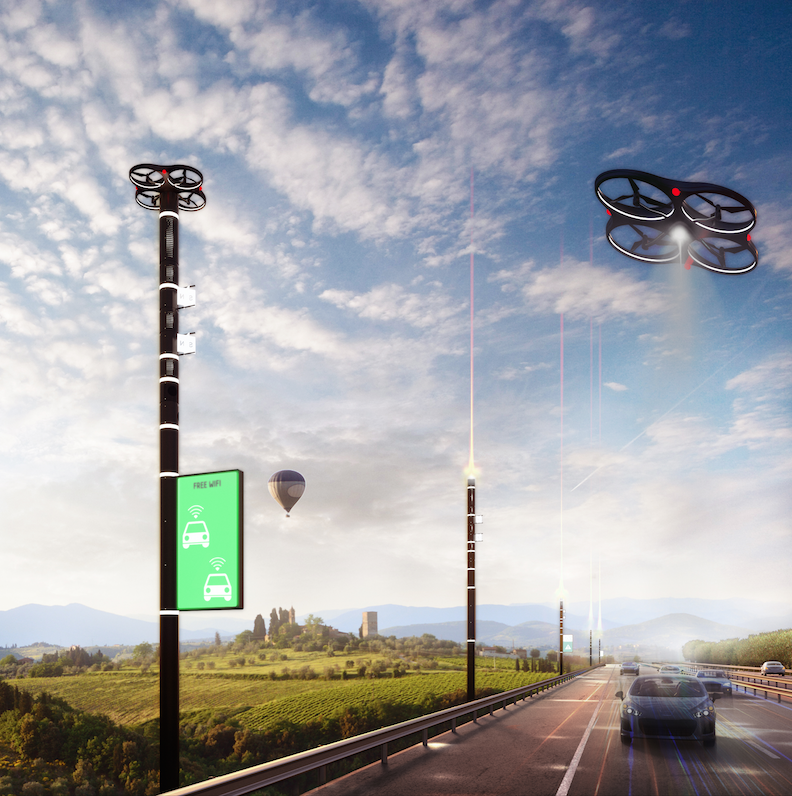Smart Roads
Smart Roads
Smart Road Technology: Paving The Way To The Future
The road is an often-overlooked part of the modern transport infrastructure. We’ve all heard of self-driving cars, navigation apps, and ride-hailing services. But as it turns out, the road itself can be a platform for an amazing array of innovations. Roads can be upgraded with communication, lighting and power transmission technologies that can support sustainability, improve safety, and transform the driving experience.
The road is an often-overlooked part of the modern transport infrastructure. We’ve all heard of self-driving cars, navigation apps, and ride-hailing services. But as it turns out, the road itself can be a platform for an amazing array of innovations. Roads can be upgraded with communication, lighting and power transmission technologies that can support sustainability, improve safety, and transform the driving experience.
The road is an often-overlooked part of the modern transport infrastructure. We’ve all heard of self-driving cars, navigation apps, and ride-hailing services. But as it turns out, the road itself can be a platform for an amazing array of innovations. Roads can be upgraded with communication, lighting and power transmission technologies that can support sustainability, improve safety, and transform the driving experience.
What Is Smart Road Technology?
Smart roads use Internet of Things (IoT) devices to make driving safer, more efficient, and greener. Smart roads combine physical infrastructures such as sensors and solar panels with software infrastructure like AI and big data.
Smart road technologies are embedded in roads and can improve visibility, generate energy, communicate with autonomous vehicles, monitor road conditions, and more:

IoT connectivity
Cities can connect roads to IoT devices, and gather traffic and weather data. This type of connectivity can improve safety, traffic management, and energy efficiency.

Traffic Management Networks
The network uses speed cameras to provide warning signs for hazardous conditions, and sends automated traffic diversion signals that control traffic.

Traffic Lights Optimization
Systems that use data from closed-circuit television (CCTV) cameras or smart vehicles to optimize traffic lights and update commuters on jams or bottlenecks.

Most transport-related smart tech focus on individual vehicles, although there have been major advances in technological solutions for smart infrastructure at scale. Worldwide experiments in Vehicle to Infrastructure (V2I), Vehicle to Vehicle (V2V) and Vehicle to Pedestrian (V2P) technologies are expected to make urban transport smarter.
What Is Smart Road Technology?
Smart roads use Internet of Things (IoT) devices to make driving safer, more efficient, and greener. Smart roads combine physical infrastructures such as sensors and solar panels with software infrastructure like AI and big data.
Smart road technologies are embedded in roads and can improve visibility, generate energy, communicate with autonomous vehicles, monitor road conditions, and more:

IoT connectivity
Cities can connect roads to IoT devices, and gather traffic and weather data. This type of connectivity can improve safety, traffic management, and energy efficiency.

Traffic Management Networks
The network uses speed cameras to provide warning signs for hazardous conditions, and sends automated traffic diversion signals that control traffic.

Traffic Lights Optimization
Systems that use data from closed-circuit television (CCTV) cameras or smart vehicles to optimize traffic lights and update commuters on jams or bottlenecks.

Most transport-related smart tech focus on individual vehicles, although there have been major advances in technological solutions for smart infrastructure at scale. Worldwide experiments in Vehicle to Infrastructure (V2I), Vehicle to Vehicle (V2V) and Vehicle to Pedestrian (V2P) technologies are expected to make urban transport smarter.
What Is Smart Road Technology?
Smart roads use Internet of Things (IoT) devices to make driving safer, more efficient, and greener. Smart roads combine physical infrastructures such as sensors and solar panels with software infrastructure like AI and big data.
Smart road technologies are embedded in roads and can improve visibility, generate energy, communicate with autonomous vehicles, monitor road conditions, and more:

IoT connectivity
Cities can connect roads to IoT devices, and gather traffic and weather data. This type of connectivity can improve safety, traffic management, and energy efficiency.

Traffic Management Networks
The network uses speed cameras to provide warning signs for hazardous conditions, and sends automated traffic diversion signals that control traffic.

Traffic Lights Optimization
Systems that use data from closed-circuit television (CCTV) cameras or smart vehicles to optimize traffic lights and update commuters on jams or bottlenecks.

